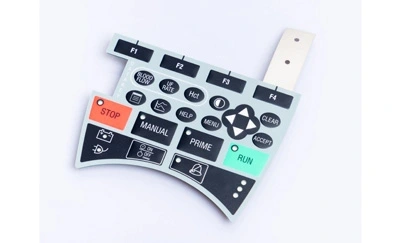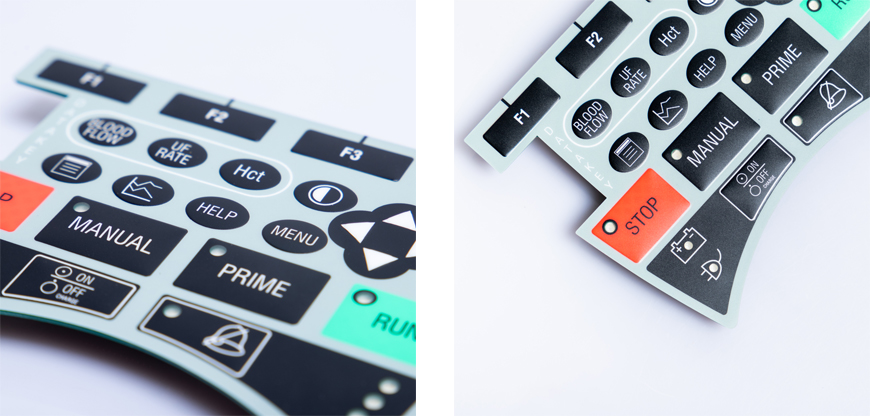
In the rapidly evolving world of technology, innovation knows no bounds. One such innovation that has been making waves in recent years is the fiber optic membrane switch. This article explores the fascinating world of fiber optic membrane switches, delving into their structure, applications, advantages, and the future they hold in revolutionizing user interface technology.

1. Introduction
2. Understanding Fiber Optic Membrane Switches
· What Are Fiber Optic Membrane Switches?
· How Do They Work?
3. Applications
· Industrial Control Panels
· Medical Devices
· Aerospace Technology
4. Advantages of Fiber Optic Membrane Switches
· Durability
· Customizability
· Enhanced Sensitivity
5. The Future of User Interface Technology
6. Challenges and Considerations
· Cost-effectiveness
· Maintenance
7. Integration with IoT
8. Case Studies
· Automotive Industry
· Healthcare Sector
9. How to Choose the Right Fiber Optic Membrane Switch
· Consider Your Application
· Evaluate Durability Needs
10. Installation and Maintenance
11. Conclusion
12. FAQs
As technology continues to advance, our interaction with devices and machinery becomes increasingly important. Fiber optic membrane switches represent a leap forward in user interface technology, offering numerous advantages over traditional switches and buttons.
What Are Fiber Optic Membrane Switches?
Fiber optic membrane switches are advanced input devices that use optical fibers to detect user input. Unlike conventional mechanical switches, they rely on the interruption of light signals to register a keystroke or button press.
How Do They Work?
These switches consist of multiple layers, including a transparent membrane, optical fibers, and a control board. When pressure is applied to the membrane, it flexes and interrupts the light signals within the optical fibers, sending a signal to the control board. This process allows for precise and reliable input detection.
Fiber optic membrane switches find applications in various industries, thanks to their versatility and durability.
Industrial Control Panels
In industrial settings, where harsh conditions are common, these switches are ideal due to their resistance to moisture, chemicals, and temperature fluctuations.
Medical Devices
Medical equipment often requires hygienic and reliable input methods. Fiber optic membrane switches are easy to clean and maintain, making them a top choice for healthcare devices.
Aerospace Technology
In aerospace applications, where weight and space are critical factors, these switches provide a lightweight and compact solution without compromising performance.
Durability
Fiber optic membrane switches are known for their longevity. They can withstand millions of actuations without failure, making them a cost-effective choice in the long run.
Customizability
Manufacturers can tailor these switches to meet specific design and functionality requirements, ensuring a perfect fit for various applications.
Enhanced Sensitivity
The optical detection method offers high sensitivity, allowing for effortless operation, even with gloved hands or in challenging environments.
The evolution of fiber optic membrane switches is far from over. With ongoing research and development, we can expect to see even more advanced and integrated solutions in the future. These switches are likely to play a significant role in shaping the next generation of user interfaces.
Cost-effectiveness
While fiber optic membrane switches offer many benefits, their initial cost can be higher than traditional switches. However, their durability often offsets this initial investment.
Maintenance
Proper maintenance is essential to ensure the continued performance of these switches. Regular cleaning and inspection are recommended to prevent issues.
As the Internet of Things (IoT) continues to grow, fiber optic membrane switches can seamlessly integrate into IoT-enabled devices, offering efficient and responsive user interfaces.
Automotive Industry
Leading automotive manufacturers have adopted fiber optic membrane switches for their reliability and customization options, enhancing the user experience in modern vehicles.
Healthcare Sector
In healthcare, where sanitation is paramount, these switches have become a staple in medical equipment, contributing to the overall safety and effectiveness of patient care.
Consider Your Application
Selecting the right switch depends on your specific application requirements. Consult with experts to ensure you choose the most suitable option.
Evaluate Durability Needs
Assess the expected usage and durability needs of your equipment. Fiber optic membrane switches are an excellent choice for long-lasting performance.
Proper installation and regular maintenance are critical to maximizing the lifespan and performance of fiber optic membrane switches. Follow manufacturer guidelines and schedule routine check-ups.
In the ever-evolving landscape of technology, fiber optic membrane switches have emerged as a game-changer in user interface technology. Their durability, customizability, and sensitivity make them a preferred choice in various industries. As we look to the future, these switches are poised to play a pivotal role in shaping the way we interact with machines and devices.
Are fiber optic membrane switches suitable for outdoor use?
Yes, they are highly resistant to environmental factors, making them suitable for outdoor applications.
Can these switches be retrofitted into existing equipment?
Yes, they can be customized to fit existing systems with the help of skilled technicians.
What is the typical lifespan of fiber optic membrane switches?
These switches can last for millions of actuations, ensuring long-term reliability.
Do fiber optic membrane switches require special cleaning methods?
While they are easy to clean, it's recommended to use non-abrasive and non-solvent cleaning solutions.
Are these switches compatible with all types of control systems?
Compatibility depends on the specific control system, so it's essential to consult with experts for integration guidance.